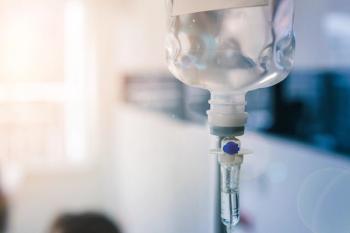
Continuous Glucose Monitoring Improves Outcomes for Patients With Type 2 Diabetes Using Only Basal Insulin
Though the benefits of continuous glucose monitoring for patients with diabetes has been previously demonstrated, the investigators said that these benefits have only been well-established for patients with type 1 diabetes or patients with type 2 diabetes treated with multiple daily insulin injections.
Continuous glucose monitoring significantly decreased hgA1C levels for patients with poorly controlled type 2 diabetes compared to blood glucose meter monitoring, according to a study published in JAMA. Though the benefits of continuous glucose monitoring for patients with diabetes has been previously demonstrated, the investigators said that these benefits have only been well-established for patients with type 1 diabetes or patients with type 2 diabetes treated with multiple daily insulin injections. However, the current study is one of the first to demonstrate the benefits of continuous glucose monitoring for patients with type 2 diabetes only treated with basal insulin, a long-acting insulin designed to be injected once or twice daily.
“Not only does this trial demonstrate the benefits of continuous glucose monitoring for these patients, a technology that hasn't been covered by many insurers for those with type 2 diabetes, but these benefits were seen across a broad spectrum of socio-economic status and racial backgrounds,” said Rodica Busui, MD, PhD, vice chair of clinical research in the Department of Internal Medicine at University of Michigan Health, in a press release.
The study enrolled 175 patients in total, approximately half of whom belonged to a racial or ethnic minority. Each participant received 1 or 2 daily injections of long-acting basal insulin with or without non-insulin medications to help lower blood sugar levels. In addition to testing the efficacy of continuous glucose monitoring paired with basal insulin, the investigators intended to study how the impact of this diabetes treatment approach affected patients' disease management adherence and overall life satisfaction.
On average, hgA1C decreased by 1.1% for patients using continuous glucose monitoring to manage their diabetes compared to 0.16% for patients using blood glucose meter monitoring. Further, across all 175 participants, adherence to diabetes management improved and life satisfaction was higher.
“For me, what's most exciting is that this work demonstrates that using continuous glucose monitoring is effective in substantially improving blood sugars levels and decreasing the risks of hypoglycemia in those that were randomized to use a continuous glucose monitor compared with the usual finger-prick,” Busui said in the release. “This may open the door for broader coverage of this game-changing technology for all patients with diabetes. More patients can manage their diabetes if they have access to this resource and their primary care physicians are educated on the benefits of their patients utilizing it.”
REFERENCE
No more finger pricks: A continuous glucose monitor benefits patients with diabetes in more ways than one [news release]. ScienceDaily; July 26, 2021. Accessed July 29, 2021.
Newsletter
Stay informed on drug updates, treatment guidelines, and pharmacy practice trends—subscribe to Pharmacy Times for weekly clinical insights.


















































































































































































































